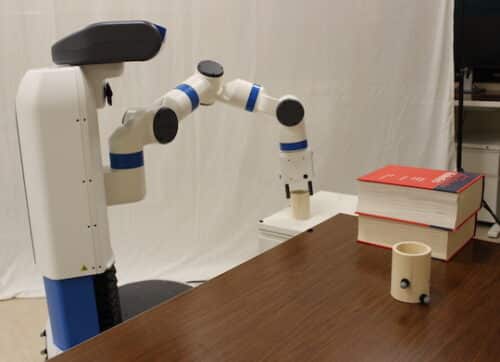Rice University engineers have devised a mechanism for people to assist robots in “seeing” their surroundings and carrying out tasks.

The Bayesian Learning IN the Dark (BLIND) technique is a novel solution to the long-standing challenge of motion planning for robots that work in environments where everything is not always clearly apparent. According to the report, the algorithm built by the researchers keeps a human in the loop to “enhance robot perception and, more crucially, prevent the execution of unsafe motion.”
To do so, they integrated Bayesian inverse reinforcement learning (in which a system learns from continuously updated knowledge and experience) with well-established motion planning approaches to help robots with “high degrees of freedom,” or many moving parts. The Rice lab used a Fetch robot, a seven-jointed articulated arm, to grasp a small cylinder from one table and carry it to another, but it had to go through a barrier to do it.
When obstructions obscure a machine’s “view” of its destination, the its programmers must be precise about the movement of each joint at each point in its trajectory. BLIND inserts a human mid-process to modify the choreographic possibilities — or best guesses — offered by the robot’s algorithm, rather than setting a trajectory up front.
“BLIND allows us to take information in the human’s head and compute our trajectories in this high-degree-of-freedom space,” Quintero-Peña said. “We use a specific way of feedback called critique, basically a binary form of feedback where the human is given labels on pieces of the trajectory,” he said. These labels appear as a series of interconnected green dots that symbolise different paths. The human accepts or rejects each movement as BLIND moves from dot to dot, refining the path and avoiding obstructions as effectively as possible.
“It’s an easy interface for people to use, because we can say, ‘I like this’ or ‘I don’t like that,’ and the robot uses this information to plan,” Chamzas said. Once rewarded with an approved set of movements, the robot can carry out its task, he said. “One of the most important things here is that human preferences are hard to describe with a mathematical formula,” Quintero-Peña said. “Our work simplifies human-robot relationships by incorporating human preferences. That’s how I think applications will get the most benefit from this work.”
Click here to view their demo on YouTube.






